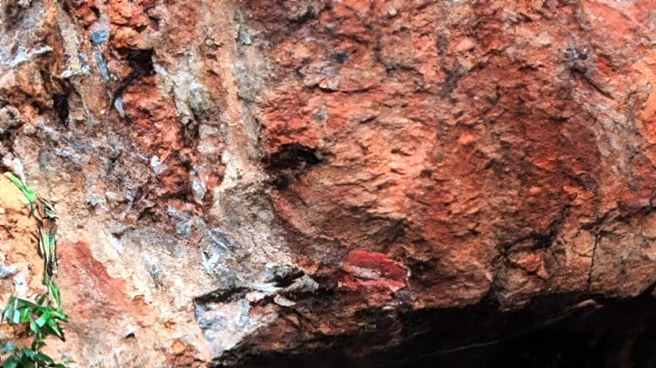What's Happening?
A recent study has revealed new insights into a 540-million-year-old fossil known as Salterella, which is reshaping the understanding of early animal evolution. Salterella, a small cone-shaped organism
from the Cambrian Period, exhibited a unique method of shell construction by combining mineralized skeletons with an organic framework. This dual-layer construction is rare among ancient animals, making Salterella difficult to classify within the evolutionary tree. Researchers, led by Prescott Vayda, have gathered samples from various locations, including Death Valley and Canada, to analyze the fossil's mineral composition and structure. The study suggests that Salterella may belong to the cnidarian group, which includes modern corals and jellyfish, providing new insights into the evolution of complex body structures.
Why It's Important?
The discovery of Salterella's unique shell-building method offers significant implications for understanding the evolution of skeletons and shells in early animals. By identifying Salterella as a possible cnidarian, researchers can better comprehend the evolutionary pathways that led to the development of complex body structures. This finding enriches the scientific narrative of life's early innovations and contributes to the broader understanding of evolutionary biology. The study highlights the importance of reevaluating long-held assumptions about ancient organisms and their roles in the evolutionary history of life on Earth.
What's Next?
Further research is expected to explore the biological functions of Salterella's mineral choices and their implications for feeding and shell stabilization. Scientists may continue to investigate other fossils from the Cambrian Period to uncover additional evolutionary links and refine the classification of ancient organisms. Collaborative efforts among institutions could lead to new discoveries that enhance the understanding of early animal evolution and the development of mineralized structures.
Beyond the Headlines
The study of Salterella not only challenges existing evolutionary theories but also underscores the complexity and diversity of life forms during the Cambrian explosion. It prompts a reevaluation of how ancient organisms adapted to their environments and developed survival strategies. This research may inspire further exploration into the ethical and philosophical dimensions of understanding life's origins and the interconnectedness of all living beings.













